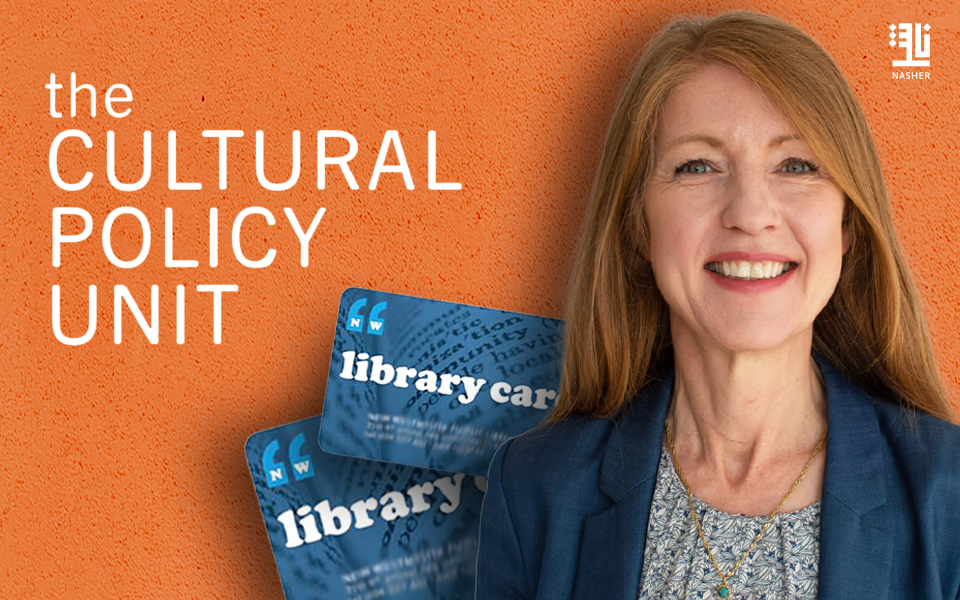It’s Oscar season, a time when the best movies and performances of the past year compete against one another. But it is important to remember that many of the best movies ever made were based on books. We have listed some of the classic films that were based on books:
The Great Gatsby by F. Scott Fitzgerald
One of many F. Scott Fitzgerald movie adaptations, The Great Gatsby explores the complex themes of social status, wealth, and the American Dream primarily through the unique narrative lens of Nick Carraway. While the films visualize the lavishness of the era, Fitzgerald’s prose provides crucial cultural context and moral shading to fully understand the weight of the story and characters. Reading the novel first immerses one in Nick’s intimate thoughts, struggles, and observations that shape the meaning of the societal values placed on status.
Trainspotting by Irvine Welsh
Trainspotting provides a raw and gritty look into the vicious cycle of heroin addiction in 1980s Edinburgh. Through Renton’s distinctive Scottish dialect and stream-of-consciousness style, the novel deeply explores the physical, psychological, and social complexities of addiction and recovery. While the cast of Trainspotting aptly help visualise the destitute desperation, only Welsh’s prose fully captures the characters’ inner turmoil, degraded sense of self, and fleeting hopes for escape. Reading the novel first immerses the audience in the receptive minds of the addicts, creating an intimate understanding of their relationships and community informed by the socioeconomic landscape of Thatcher-era policies.
The Girl On The Train by Paula Hawkins
Using Hawkins’ unsettling psychological thriller prose, The Girl on the Train fully immerses the audience into Rachel’s fractured mind and the suburban landscape’s ominous secrets. While the film visually depicts her alcoholism and the story’s central mystery, only the novel’s characterisation thoroughly captures Rachel’s shredded memories, overwhelming guilt, and questionable perceptions.
The Remains Of The Day by Kazuo Ishiguro
The Remains of the Day relies on Ishiguro’s subtle, evocative writing to bring life to protagonist Steven’s concealed inner turmoils and the story’s refined emotional complexity. The film perfectly captures the book’s essence and atmosphere, but Ishiguro’s writing fully realizes the nuances of Steven’s narrative voice and perspective as he navigates political tensions and personal connections.
Jaws by Peter Benchley
The novel, Jaws, pioneered the thriller through Benchley’s masterful prose that slowly built suspense through scientific detail and graphic shark attacks. While Spielberg’s adaptation redefined the summer blockbuster, the novel taps into the primal fear of the ocean’s unseen horrors through the foreshadowing and perspectives unavailable in the film. Reading the book helps to get into the minds of the characters as paranoia and fear escalate across the community.
The Godfather by Mario Puzo
The Godfather film trilogy excels at dramatising the Corleone family saga, but Puzo’s writing fully captures the intricate inner workings and moral complexities of the mafia underground. Through the book’s narration and tonal style, an intimate view of the Corleones’ criminal network, family loyalty, and power plays is better seen due to the direct style that the film cannot match. By experiencing the moral ambiguity at the story’s core through Puzo’s lens first, the films’ acclaimed performances and visuals have even greater impact.
Lolita by Vladimir Nabokov
Lolita’s shocking exploration of forbidden desire relies profoundly on Nabokov’s linguistic mastery to convey the moral complexities within Humbert’s twisted psyche. The films aim to translate his obsession visually, but the novel is necessary to immerse oneself in Humbert’s nuanced emotions and unravel the deeper questions within his manipulation of Dolores. Through Nabokov’s intense, poetic style and wordplay, it’s easier to understand the narrative’s layers that provide the foundation to fully grasp the essence of this controversial story and its themes.
Pride and Prejudice by Jane Austen
Though Pride and Prejudice has inspired many beloved period films, Austen’s timeless social commentary and profound character insights reside fully in her wit. While the movies visualize the 19th century English countryside, only Austen’s astute narrator can immerse readers into the intricate social norms and expectations placed on women and marriage. The book adds depth to Elizabeth and Darcy, shaping their prideful tension with insightful glimpses into class, reputation, and transformation not translated on screen. Though the films capture Austen’s atmospheric world, the novel’s examinations of self-growth versus superficial judgments can only be fully experienced through the book.
12 Years a SlaveTwelve Years a Slave
“Northup, a black man who was born free in New York, details his kidnapping in Washington, D.C., and subsequent sale into slavery. After having been kept in bondage for 12 years in Louisiana, Northup was able to write to friends and family in New York, who were in turn able to secure his release.”
The Age of Innocence by Edith Wharton
“The return of the beautiful Countess Olenska into the conventional society of New York sends reverberations throughout the upper reaches of society. Newland Archer, an eligible young man of the establishment is about to announce his engagement to May Welland, a pretty ingenue, when May’s cousin, Countess Olenska, is introduced into their circle.”
Anna Karenina by Leo Tolstoy
Considered by some to be the greatest novel ever written, Anna Karenina is Tolstoy’s classic tale of love and adultery set against the backdrop of high society in Moscow and Saint Petersburg. A rich and complex masterpiece, the novel charts the disastrous course of a love affair between Anna, a beautiful married woman, and Count Vronsky, a wealthy army officer. Tolstoy seamlessly weaves together the lives of dozens of characters, and in doing so captures a breathtaking tapestry of late-nineteenth-century Russian society.”
Atonement by Ian McEwan
On a hot summer day in 1935, thirteen-year-old Briony Tallis witnesses a moment’s flirtation between her older sister, Cecilia, and Robbie Turner, the son of a servant and Cecilia’s childhood friend. But Briony’ s incomplete grasp of adult motives–together with her precocious literary gifts–brings about a crime that will change all their lives.
Beloved by Toni Morrison
Sethe, its protagonist, was born a slave and escaped to Ohio, but eighteen years later she is still not free. She has too many memories of Sweet Home, the beautiful farm where so many hideous things happened. And Sethe’s new home is haunted by the ghost of her baby, who died nameless and whose tombstone is engraved with a single word: Beloved. Filled with bitter poetry and suspense as taut as a rope, Beloved is a towering achievement.
The BFG by Roald Dahl
The BFG is no ordinary bone-crunching giant. He is far too nice and jumbly. It’s lucky for Sophie that he is. Had she been carried off in the middle of the night by the Bloodbottler, or any of the other giants—rather than the BFG—she would have soon become breakfast. When Sophie hears that the giants are flush-bunking off to England to swollomp a few nice little chiddlers, she decides she must stop them once and for all. And the BFG is going to help her!
The Color Purple by Alice Walker
This is the story of two sisters – one a missionary in Africa and the other a child wife living in the South – who sustain their loyalty to and trust in each other across time, distance, and silence. Beautifully imagined and deeply compassionate, this classic novel of American literature is rich with passion, pain, inspiration, and an indomitable love of life.
Don Quixote by Miguel de Cervantes
Widely regarded as one of the funniest and most tragic books ever written, Don Quixote chronicles the adventures of the self-created knight-errant Don Quixote of La Mancha and his faithful squire, Sancho Panza, as they travel through sixteenth-century Spain.
Dracula by Bram Stoker
During a business visit to Count Dracula’s castle in Transylvania, a young English solicitor finds himself at the center of a series of horrifying incidents. Jonathan Harker is attacked by three phantom women, observes the Count’s transformation from human to bat form, and discovers puncture wounds on his own neck that seem to have been made by teeth. Harker returns home upon his escape from Dracula’s grim fortress, but a friend’s strange malady — involving sleepwalking, inexplicable blood loss, and mysterious throat wounds — initiates a frantic vampire hunt.
The English Patient by Michael Ondaatje
With unsettling beauty and intelligence, Michael Ondaatje’s Booker Prize-winning novel traces the intersection of four damaged lives in an abandoned Italian villa at the end of World War II.The nurse Hana, exhausted by death, obsessively tends to her last surviving patient. Caravaggio, the thief, tries to reimagine who he is, now that his hands are hopelessly maimed. The Indian sapper Kip searches for hidden bombs in a landscape where nothing is safe but himself. And at the center of his labyrinth lies the English patient, nameless and hideously burned, a man who is both a riddle and a provocation to his companions—and whose memories of suffering, rescue, and betrayal illuminate this book like flashes of heat lightning.
Girl, Interrupted by Susanna Kaysen
In 1967, after a session with a psychiatrist she’d never seen before, eighteen-year-old Susanna Kaysen was put in a taxi and sent to McLean Hospital. She spent most of the next two years in the ward for teenage girls in a psychiatric hospital as renowned for its famous clientele—Sylvia Plath, Robert Lowell, James Taylor, and Ray Charles—as for its progressive methods of treating those who could afford its sanctuary.
Gone with the Wind by Margaret Mitchell
This is the tale of Scarlett O’Hara, the spoiled, manipulative daughter of a wealthy plantation owner, who arrives at young womanhood just in time to see the Civil War forever change her way of life. A sweeping story of tangled passion and courage, in the pages of Gone With the Wind, Margaret Mitchell brings to life the unforgettable characters that have captured readers for over seventy years.
The Handmaid’s Tale by Margaret Atwood
The Handmaid’s Tale is a novel of such power that the reader will be unable to forget its images and its forecast. Set in the near future, it describes life in what was once the United States and is now called the Republic of Gilead, a monotheocracy that has reacted to social unrest and a sharply declining birthrate by reverting to, and going beyond, the repressive intolerance of the original Puritans. The regime takes the Book of Genesis absolutely at its word, with bizarre consequences for the women and men in its population.
The Joy Luck Club by Amy Tan
Four mothers, four daughters, four families whose histories shift with the four winds depending on who’s “saying” the stories. In 1949 four Chinese women, recent immigrants to San Francisco, begin meeting to eat dim sum, play mahjong, and talk. United in shared unspeakable loss and hope, they call themselves the Joy Luck Club. Rather than sink into tragedy, they choose to gather to raise their spirits and money. “To despair was to wish back for something already lost. Or to prolong what was already unbearable.” Forty years later the stories and history continue.
The Kite Runner by Khaled Hosseini
The unforgettable, heartbreaking story of the unlikely friendship between a wealthy boy and the son of his father’s servant, caught in the tragic sweep of history, The Kite Runner transports readers to Afghanistan at a tense and crucial moment of change and destruction. A powerful story of friendship, it is also about the power of reading, the price of betrayal, and the possibility of redemption; and an exploration of the power of fathers over sons—their love, their sacrifices, their lies.
Love in the Time of Cholera by Gabriel García Márquez
In their youth, Florentino Ariza and Fermina Daza fall passionately in love. When Fermina eventually chooses to marry a wealthy, well-born doctor, Florentino is devastated, but he is a romantic. As he rises in his business career he whiles away the years in 622 affairs–yet he reserves his heart for Fermina. Her husband dies at last, and Florentino purposefully attends the funeral. Fifty years, nine months, and four days after he first declared his love for Fermina, he will do so again.” One Flew Over the Cuckoo’s Nest by Ken Kesey
In this classic novel, Ken Kesey’s hero is Randle Patrick McMurphy, a boisterous, brawling, fun-loving rebel who swaggers into the world of a mental hospital and takes over. A lusty, life-affirming fighter, McMurphy rallies the other patients around him by challenging the dictatorship of Nurse Ratched. He promotes gambling in the ward, smuggles in wine and women, and openly defies the rules at every turn.”
Persepolis: The Story of a Childhood by Marjane Satrapi
Intensely personal, profoundly political, and wholly original, Persepolis is at once a story of growing up and a reminder of the human cost of war and political repression. It shows how we carry on, with laughter and tears, in the face of absurdity. And, finally, it introduces us to an irresistible little girl with whom we cannot help but fall in love.
The Shining by Stephen King
Jack Torrance’s new job at the Overlook Hotel is the perfect chance for a fresh start. As the off-season caretaker at the atmospheric old hotel, he’ll have plenty of time to spend reconnecting with his family and working on his writing. But as the harsh winter weather sets in, the idyllic location feels ever more remote . . . and more sinister. And the only one to notice the strange and terrible forces gathering around the Overlook is Danny Torrance, a uniquely gifted five-year-old.
The Silence of the Lambs by Thomas Harris
As part of the search for a serial murderer nicknames “Buffalo Bill,” FBI trainee Clarice Starling is given an assignment. She must visit a man confined to a high-security facility for the criminally insane and interview him. That man, Dr. Hannibal Lecter, is a former psychiatrist with unusual tastes and an intense curiosity about the darker corners of the mind. His intimate understanding of the killer and of Clarice herself form the core of Thomas Harris’ The Silence of the Lambs–an unforgettable classic of suspense fiction.







